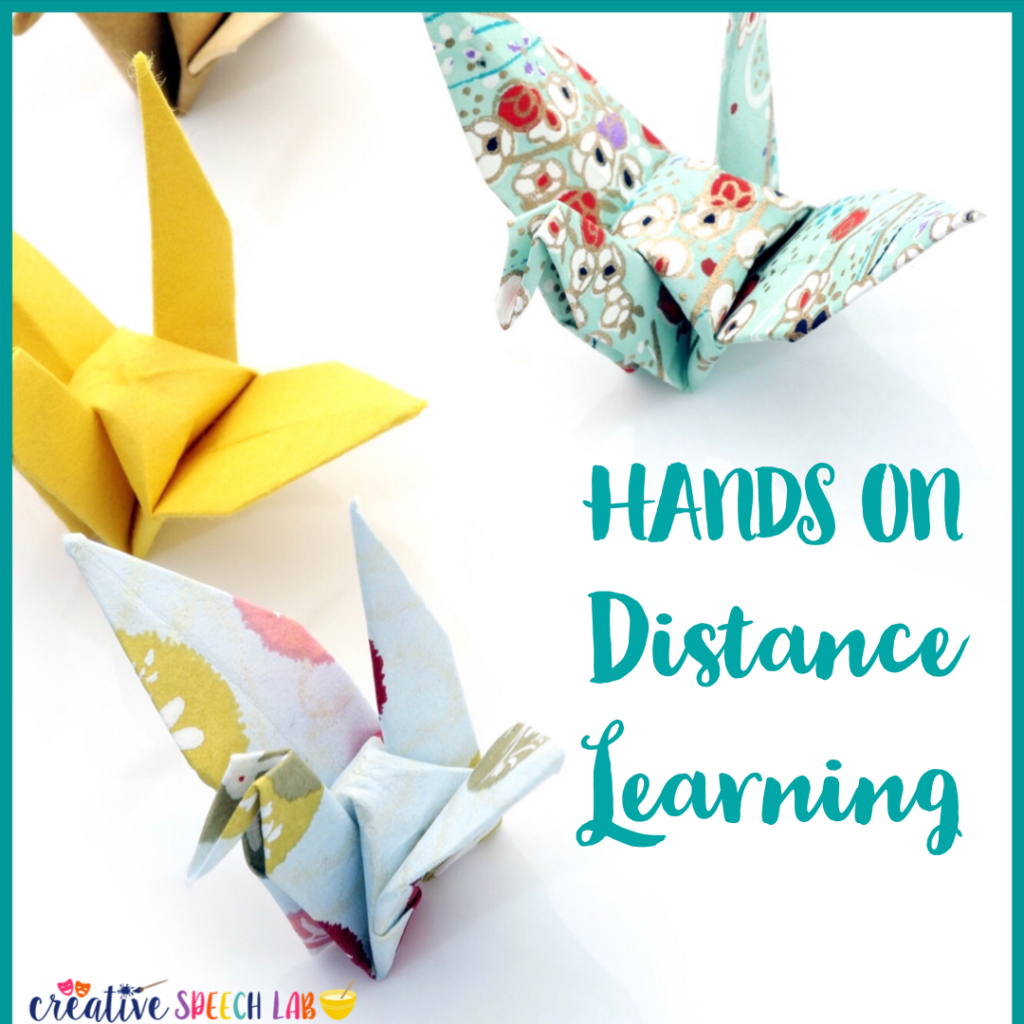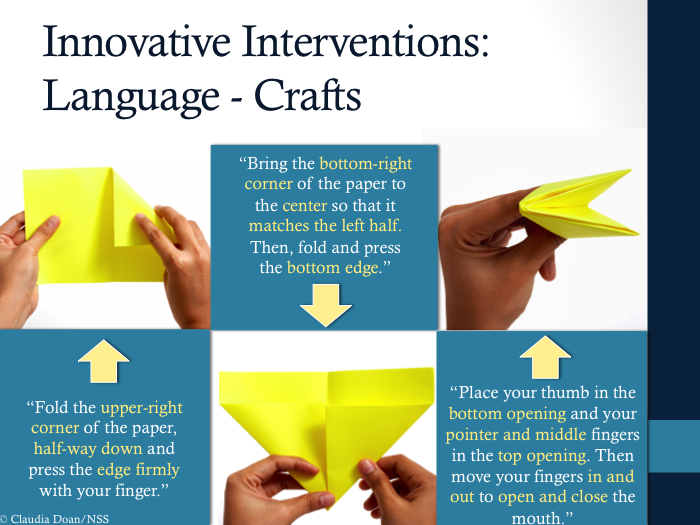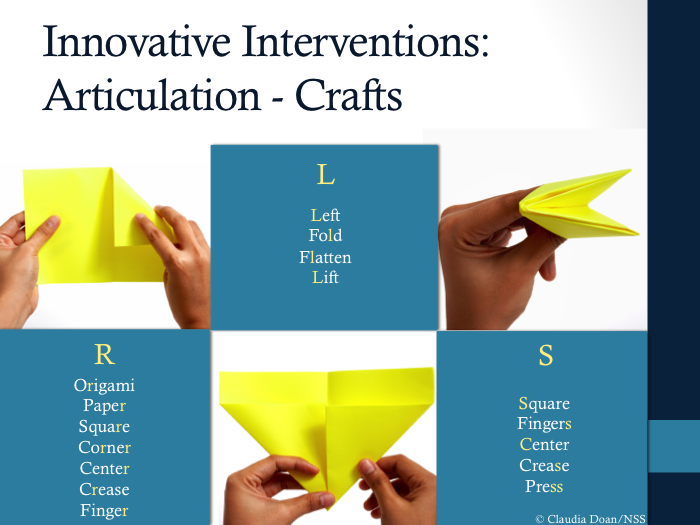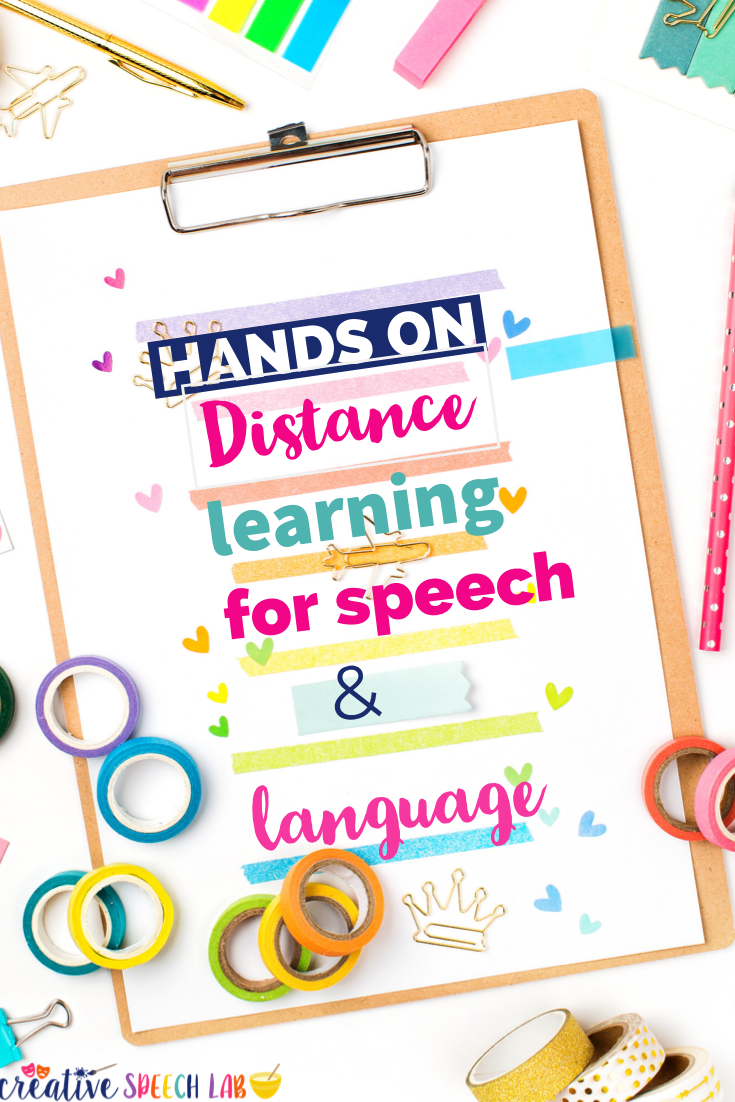In the era of distance learning, do we really need to choose between hands-on activities and digital ones?
In short: DO BOTH! (Yes, you really can).
I’m here to tell you that these activity types are not mutually exclusive.
In fact, hands-on learning lessons can bring such a human “touch” to online therapy sessions.
Here are some ways you can make the hands-on magic happen during your digital sessions.
1. Origami
Are any of your students working on following directions involving basic concepts?
How about sequencing? Oral language? Articulation?
All your student needs is a square piece of paper and your directions (which you can easily find on the Internet).
As you can see above, origami is packed with language concepts!
I was also pleasantly surprised when I realized the meaningful articulation carryover this activity can provide. Just look at how many sound targets are naturally embedded into this activity below! The bonus is that each target word carries meaning in the context of the activity (which means students will reflect on those words later and possibly talk about the experience with their family).
(The above slides are from my Innovative Interventions Online course with Northern Speech Services, which provides 0.3 ASHA CEUs!)
If you’d like to start out by asking your students to fold simple fortune tellers, grab a FREE set at the bottom of this page!
Don’t have time for origami right now? Pin this idea for later!

2. Easy DIY Book Puppets
Stop the scroll!
You may think this is too much work, but, if you’ve got a book and a printer, it is worth the 5 minutes (because that’s how long it takes)!
I love using Mo Willems’ books because they are filled with dialogue between characters!
If you have a copier function on your printer, copy the book characters, cut them out and tape them to a straw/popsicle stick/spoon!
If you don’t have a copier function, snap a photo with your phone and print that photo on your printer. Cut it out and voila!
Use your puppets to practice:
- Speech sounds as you read (I love using erasable highlighters to highlight target sounds)
- Story retell – act it out again
- Pronouns
- Reading comprehension – what is happening in the story?
2. Distance Learning Scavenger Hunt
YES! You can do a scavenger hunt for distance learning! In fact, if your kids need to get up and move, these free scavenger hunts will allow your students to work on language skills while also showing you items from their environment and getting their energy out! What’s not to love?
Grab your scavenger hunts HERE!
3. Building-Bricks
The distance learning possibilities are endless when it comes to building-bricks!
Check out my blog post with specific ways to use building-bricks to teach:
- Giving/following directions
- Sequencing
- Prepositions
- Articulation
- Vocabulary attributes
All of these lessons can work well virtually provided that the blocks are visible on the screen!
4. Simple Drawing Directions
Grab a pencil and paper (’cause that’s all you need)!
It is super easy to do barrier activities during teletherapy sessions (for the record, the “Guess Who” game is a fantastic example of this)!
This is all you need to do:
- Draw a picture with many different shapes.
- Describe it to your student so that s/he can draw the exact same thing based on your directions.
- Alternatively, ask your student to draw and give you directions! This provides a tremendous way to work on basic concepts and multi-step directions!
5. Show and Tell
Why not capitalize on the positives to being at home? Show and Tell provides a simple and tremendously meaningful way for your students to connect with you personally.
Of course, Show and Tell provides an excellent vehicle for working on:
- Oral language
- WH Questions
- Narrative language
- Articulation
- Social Skills
- Vocabulary Attributes
What do you think? Do you have any other ideas? If so, leave a comment and let me know!
If you’d like to refer back to this blog post, be sure to pin it for later!









